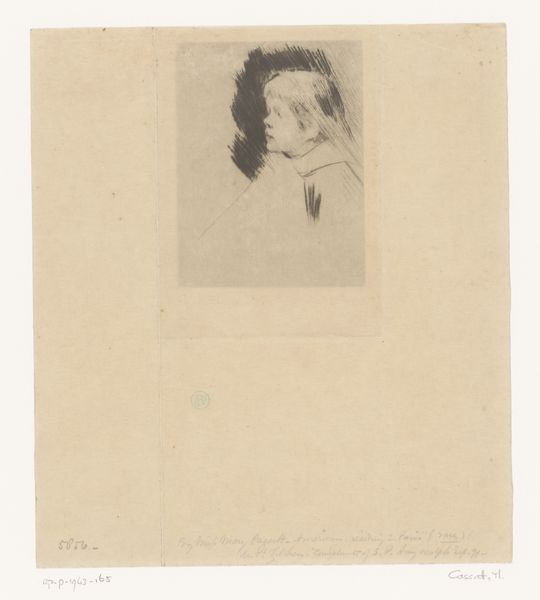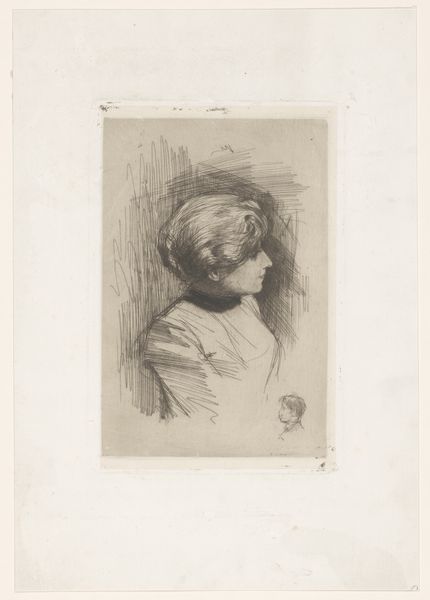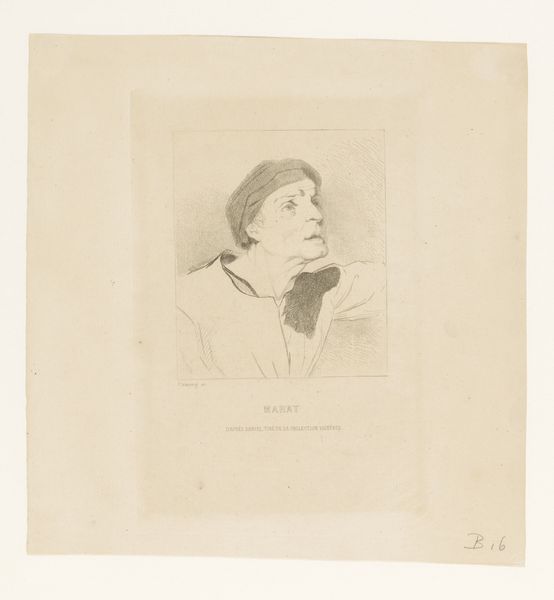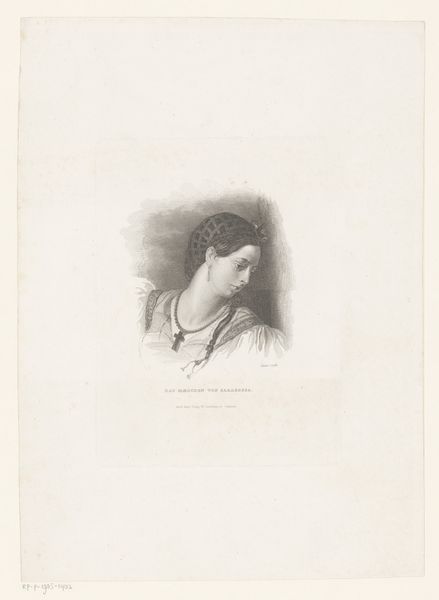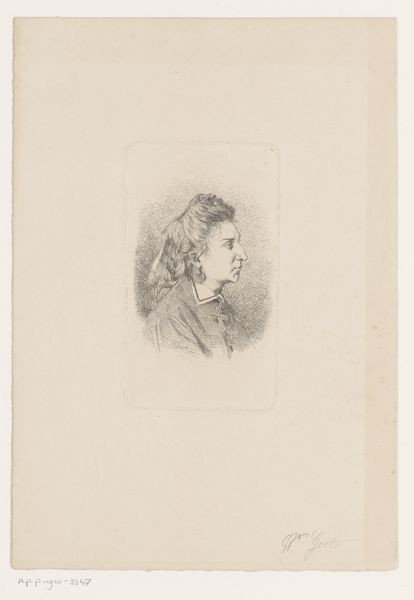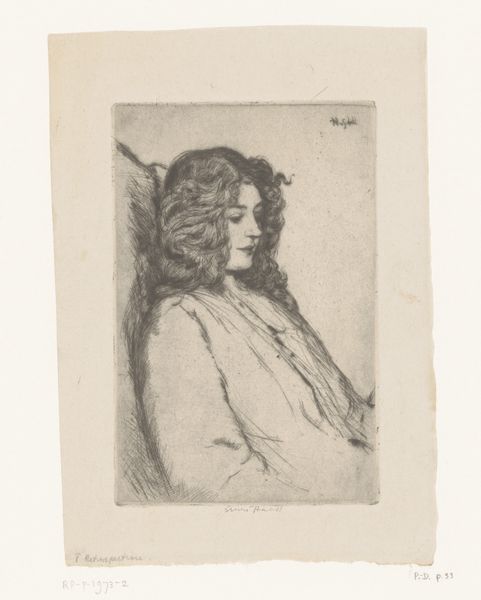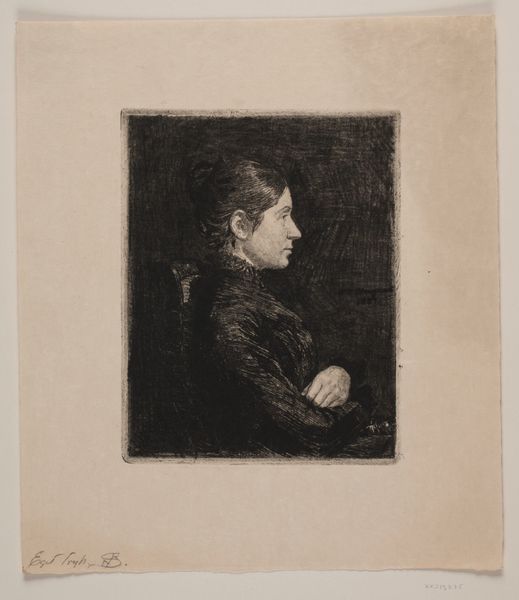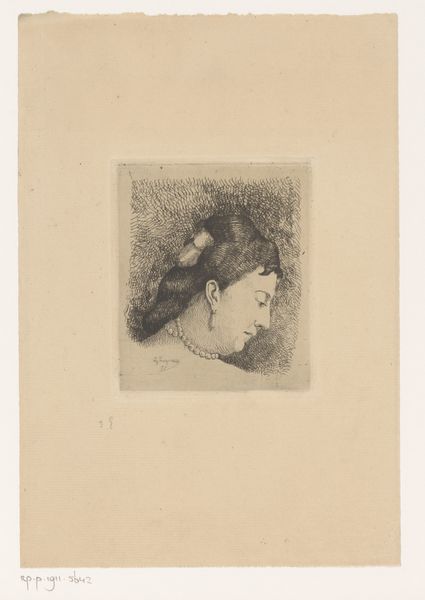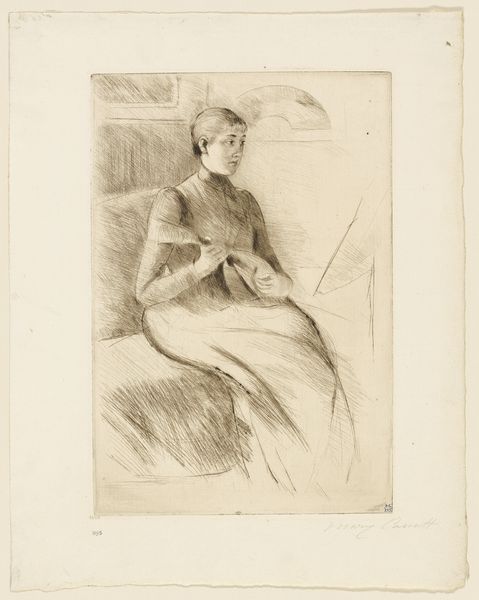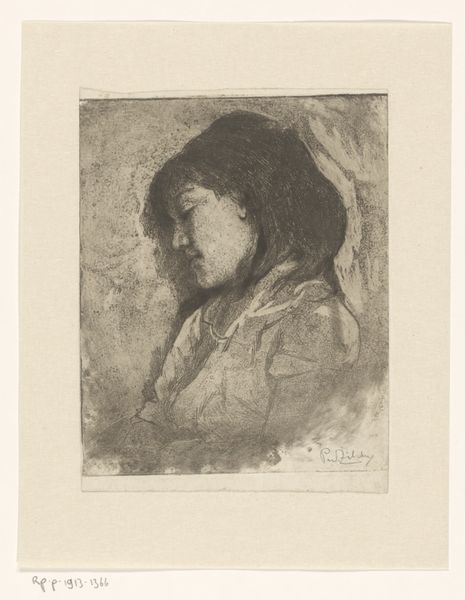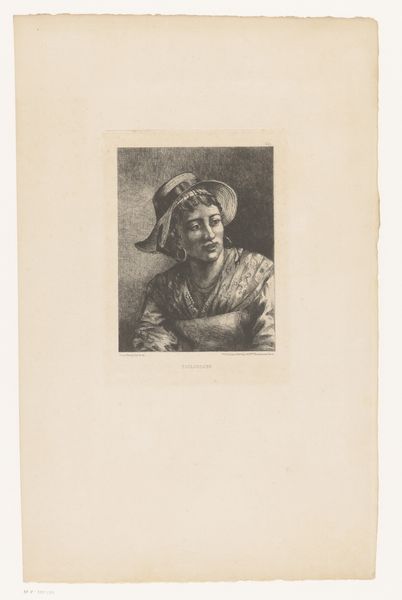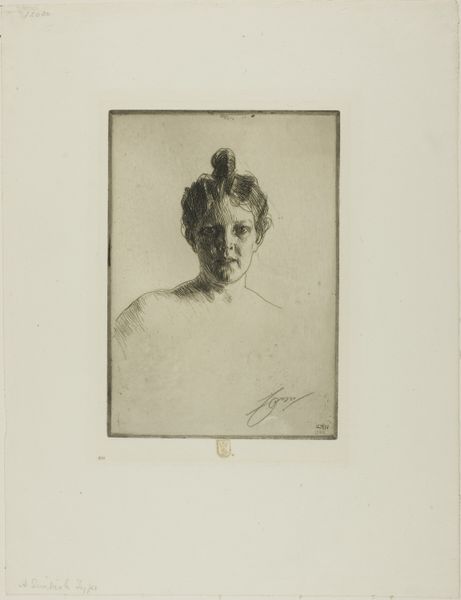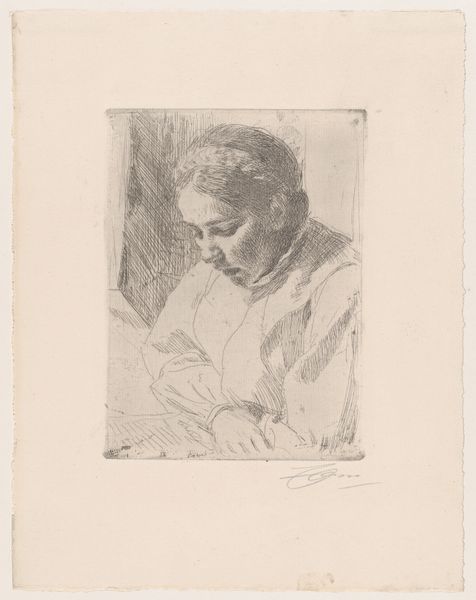
print, etching
#
portrait
#
pencil drawn
# print
#
etching
#
old engraving style
#
pencil drawing
#
genre-painting
#
academic-art
#
realism
Dimensions: height 147 mm, width 100 mm
Copyright: Rijks Museum: Open Domain
Curator: Here at the Rijksmuseum, we have an etching by Auguste Danse entitled "Zieke dame in bed," or "Sick lady in bed," from 1883. What strikes you first about it? Editor: The texture. It’s immediately tactile; I want to know how the artist manipulated the etching tools to get that soft, almost fuzzy quality in the shadows and the woman's dress. It feels quite intimate. Curator: The intimate scale certainly draws you in. Considering the date, this image speaks volumes about the socio-political landscape surrounding illness, particularly for women. It’s a very vulnerable portrayal. Editor: Absolutely. Etching as a medium, given its association with printmaking, allows for reproduction and distribution. Was this image intended for public consumption or more as a private study, perhaps? It's difficult to imagine this kind of starkness making its way into the salon. Curator: Well, Danse moved within Realist and Academic circles. Genre painting such as this was used as an accessible art, making use of realism to portray social realism themes. Editor: It makes me think about the materials involved. What kind of paper was used, and where was it sourced? Was the copper plate locally produced or imported? The materiality here shapes the final piece and tells a story about the art world's supply chains at the time. Curator: Those are crucial questions, reminding us that even what seems like a simple portrait carries the weight of economic and material realities. I agree that this work serves not only as an aesthetic statement but also a historical document, reflecting on themes of gender and health. Editor: Exactly! The choice to depict illness is also meaningful. It challenges the romanticization of suffering that was prevalent in some artistic circles. Danse gives us a raw, unidealized view of sickness, made more potent by the inherent reproducibility of the etching process. Curator: By focusing on the social implications and the impact of reproduction techniques, we see how art truly is interwoven with society at large. Editor: And by examining the means of production, the tools and the materials, we start to understand art's connection with everyday realities. There's a lot packed into this small etching.
Comments
No comments
Be the first to comment and join the conversation on the ultimate creative platform.
